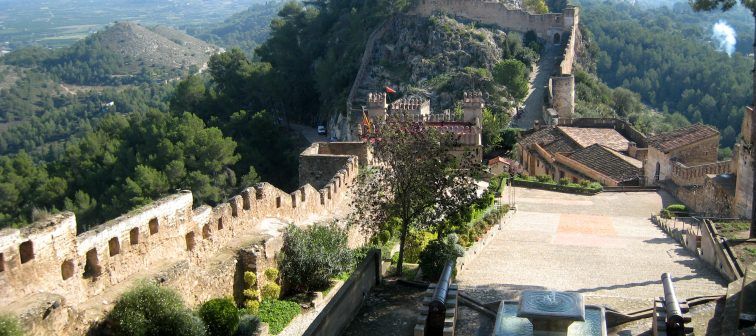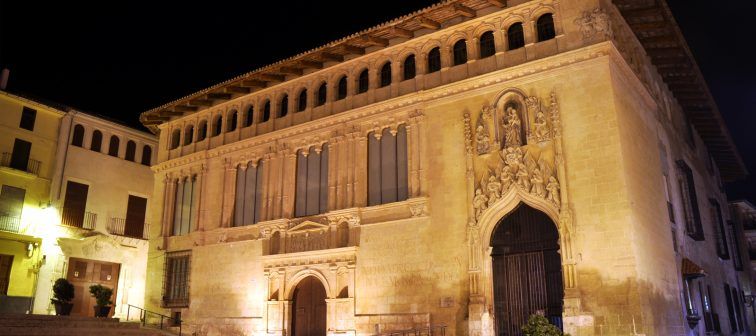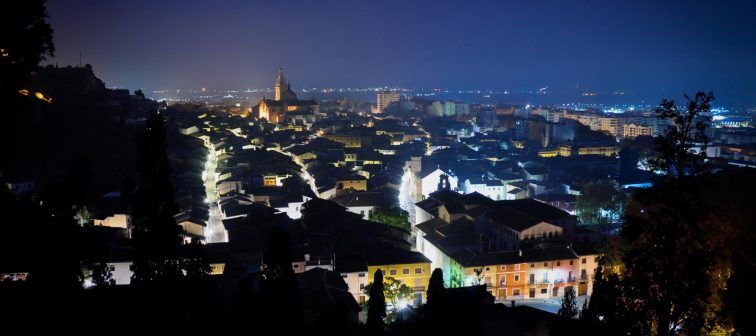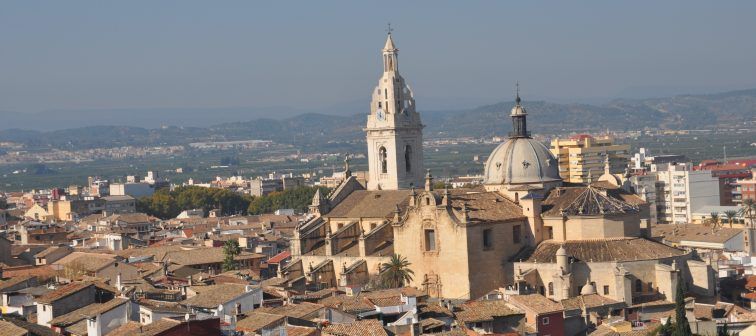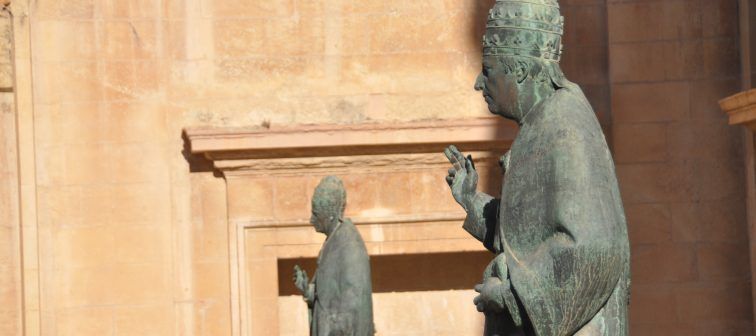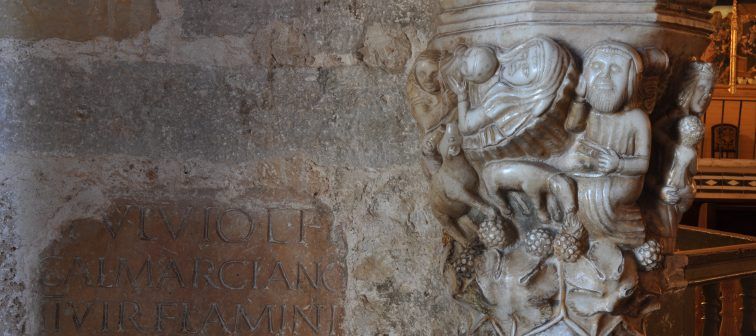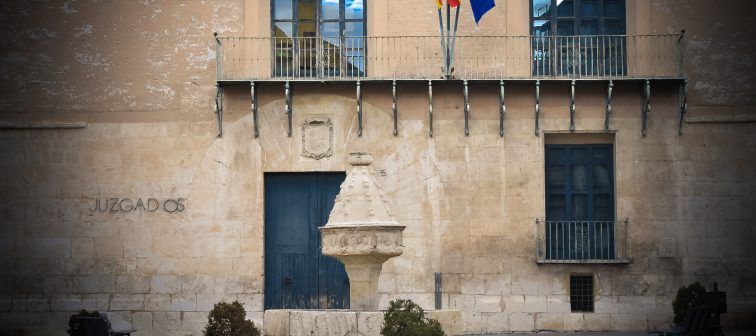Xàtiva
Xàtiva’s splendid historical and artistic heritage reveals the footprints of the diverse civilizations that have passed through the city in the form of their culture, their monuments and their historical episodes, some of them awash with bloody. A cultural, historical and heritage city, the capital of the administrative region of La Costera, with very important tourist, commercial and industrial sectors and excellent communications by road and rail. It lies 62km from Valencia and 42km from Gandia. Its economy was formerly based on agriculture and industry, although is now specialised in the services sector.
Gastronomy:
“L’arròs al Forn” (baked rice), paella and “arròs fesols i amb naps” (rice with beans and turnip) are some of the most popular local dishes.
Local sweets and pastries include “arnadí”, a dessert made from pumpkin pulp, and sweet potato with ground almonds and sugar; “almoixàvena”, and “les bones taronges de Xàtiva”.
There are other sweets which are typical to many of the towns and villages in La Costera: “coca llanda”, “nevasa cake”, sweet potato cakes, “sequillos”, etc.
Places of interest:
The city of Xàtiva has been declared a historical-artistic site. Its heritage includes:
El Castell (The Castle):
In reality there are two castles, known respectively as the “Minor” and the “Major”, which extend from east to west at the top of the mountain and are joined by sizeable military structures. The fortresses were the starting point for the walls which enclosed the early medieval town, with a second defensive ring added later to enclose what is today the old centre. By virtue of its favourable position, the castle controlled the Roman road, and thus played a major role in the campaigns of Hannibal, Scipio and Sertorio. Its strategic importance increased as a result of the new period in which the peninsula was immersed following the overthrow of the Umayyad dynasty and the subsequent decomposition of the Caliphate of Cordoba.
The Christian monarchs turned the city into a fortress to defendbthe route from Castile to the capital of the kingdom, and its fort into a state prison of the Crown of Aragon, where pretenders to the crown, as well as to the crowns of Mallorca and Naples, were incarcerated. It was instrumental during the War of the Union and War the two Pedros with Castile, and played a decisive role in the conflict of the “Germanies” and the War of Succession to the Crown of Spain, which began in 1705. However, the damage caused by the artillery of Philip V’s troops during this conflict, together with the effects of the earthquake in 1748, led to a reduction in its strategic importance, with it having become almost irrelevant at the time of the French invasion and virtually insignificant in the Carlist Wars of the last century. The elements that are conserved today are composed of rammed earth, masonry or dressed stone blocks, mostly dating from either the Islamic period or from the 14th century.
The Collegiate Basilica of Saint Mary of La Seo
(1599), Renaissance style, with very important works of art and jewellery.
The Church of Saint Francis (14th-century)
The palace of the Marquis of Montortal (15th-century)
The Hermitage of Saint Felix (Gothic) with altarpieces
l’Almodí Museum, which is host to works by the painter José de Ribera and the famous painting of Phillip V which is hung upside down.
The parish church of Saint Peter (13th-/14th-century)
the old hospital (15th-/16th-centuries)
The Convent of Saint Dominic (14th-century)
The stately homes and palaces located in Calle Moncada
Alarcón Palace (18th-century)
The Convent of Saint Clare (founded in 1325)
“El jardín del Beso” (The Garden of the Kiss), with a fountain with 25 spouts.
Natural sites of great beauty, such as la Cova Negra and Bixquert.
The Borgias Route:
The Borgias Route is a tourist-cultural itinerary that enables visitors to discover the origins and the history of the most international Valencian family.
A family which saw, within a period of 50 years, two of its members proclaimed Pope, whose descendants came to form part of the noblest families, conquering part of Italy and inspiring a large number of biographies novels and films.
An amazing story that we can discover by visiting the places of origin and passage of the Borgias: Canals, Xàtiva, Simat de la Valldigna, Gandia and Valencia.
In Xativa we can walk through medieval streets and discover a multitude of fountains that have resonated in the squares since Islamic times. “La Seu-Collegiate” and the old medieval hospital, the Almodí Museum and the birthplace of Pope Alexander VI are highly-recommended visits.
Festivities:
Xativa’s most prominent festivity is undoubtedly the “Fira d’Agost” (August Fair). It is held from 15th to 20th and includes a wide range of events (bullfights, chants of “Albades” paella festival, outdoor concerts, fireworks, live music, etc.) and travelling craft and food stalls, etc., that fully occupy the city’s main avenue. It has been declared of National Tourist Interest.
Also of special importance are “Las Fallas” (from 15th to 19th March), Corpus Christi, Holy Week, Easter and Christmas, during which a life-size nativity scene is installed in Alameda Jaime I.


